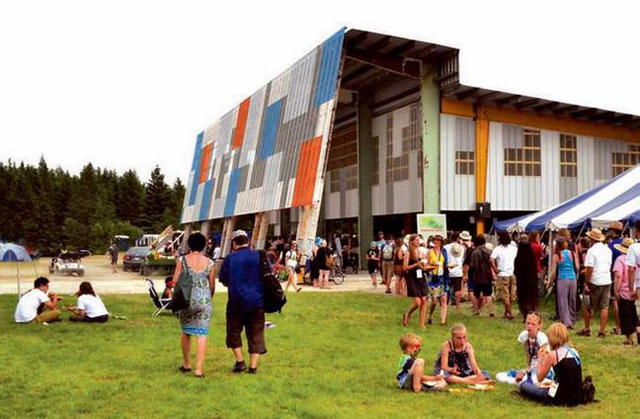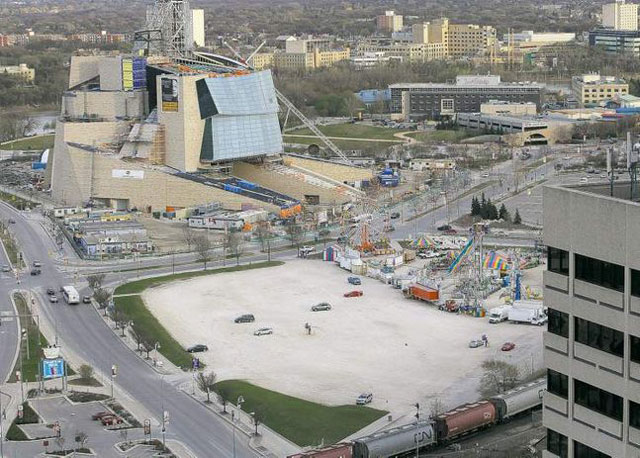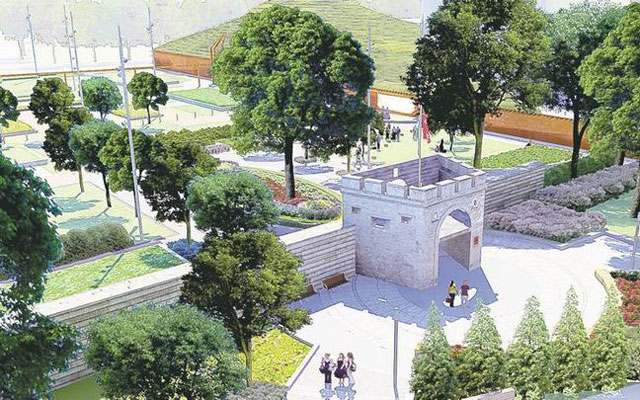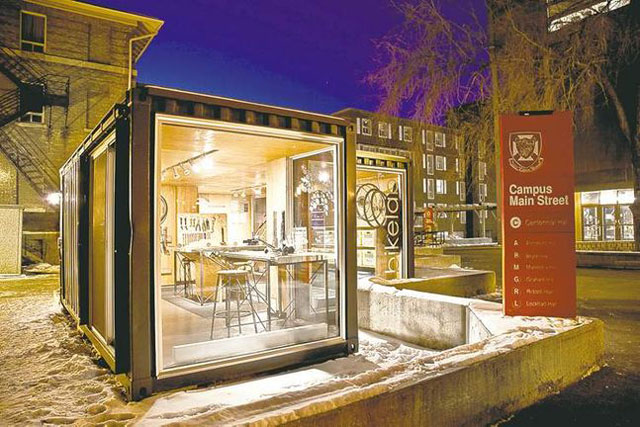Local buildings display green benefits
- Details

There is an 89 per cent chance you are inside a building at this very moment. On average, Canadians spend 21 hours and 20 minutes of every day indoors. In a country of 34 million people, we have almost 14 million buildings that consume 70 per cent of our electricity, 14 per cent of our water and 50 per cent of our extracted natural resources. They account for 25 per cent of our landfill waste and emit 35 per cent of our greenhouse gases.
These statistics illustrate the profound effect buildings have on each one of us. Our physical health, emotional well-being and ecological footprint are all closely linked to the types of buildings we choose to build and inhabit.
Manitoba Hydro Place recently earned LEED Platinum certification for green building.
Make residential splash at Forks - Rejected site of water park can enrich critical area
- Details

So... what now?
Over the past few months, Winnipeggers have been captivated by the most recent chapter in one of our city's great legends of modern folklore, the search for the ever-elusive "world-class Winnipeg water park."
Adjacent to The Forks, the location of the most recent water-park proposal created a wave of public opposition that caused Canalta Hotels to pack up its snorkel and swim fins and head back to Drumheller. With the pressure relieved, we now have the opportunity to step back and ask ourselves as a community, what is the best way forward for one of the most important pieces of real estate that we, the citizens of Winnipeg, collectively own?
A fort reborn - Historic site to begin transformation 130 years after demolition
- Details

The Oct. 26, 1881, edition of the Manitoba Free Press reported, "A cow with a bell on, now in the pound, will shortly be sold by auction if the owner doesn't look after her." Secondary to this news, it was noted that, "The buildings within the walls of Fort Garry are to be removed this season, so that Main Street will be continued in a straight line to the Assiniboine Bridge."
Considered insignificant in the moment, the century-long lament of Upper Fort Garry's demolition would begin a mere seven years later in an article from the Montreal Star that proclaimed, "It would have been worth yearly thousands of dollars to future Winnipeg as a bit of pioneer history of the most fascinating sort, but the thick-headed controllers of the city's destiny could see nothing but the immediate realisation of its value in dollars and cents. It is about the most astounding piece of utterly ignorant and vulgar administration that Canada affords."
New buildings contain promise - Shipping units repurposed as sustainable architecture
- Details

Moonlight sparkled on the water as a sleek new cargo ship backed away from her Vancouver dock and quietly slipped into the dark November night. Without ceremony, the Clifford J. Rodgers set sail for the Yukon carrying a shipment of beer, stored for the first time in a series of specially fabricated stacking metal containers. On that autumn night in 1955, she became the first cargo ship in the world to use this revolutionary technology that would transform the global economy in the 20th century.
Today, 90 per cent of the world's cargo is transported in standardized shipping containers, with more than 20 million containers making 200 million trips each year.
Architect David Penner is creatively exploring the use of shipping containers in a proposed new rental housing development at 956 Notre Dame Ave.
Why I became a place maker
- Details
I have always enjoyed buildings. When I was a kid my family traveled on long summer vacations in our Ford Country Squire station wagon. We pulled our camper trailer around North America, through cities, towns and wilderness. I have vivid memories of peering through the backseat window (no seat belt on of course) and admiring the tall buildings, construction cranes and shimmering glass. Wherever we went, we toured every museum, landmark and tourist trap. I remember wondering who made these special places and enjoying the stories that they told through the environments they had created.
Whether it’s spiraling up the Guggenheim, gazing out from the Empire State, navigating the streets of Tijuana or pulsing through the Luxor in Las Vegas, the variety of experiences boggles the mind. I also remember the wonder of natural places; organic places that have been grown, carved out, or molded over time. Sometimes, the natural and the man-made come together. I can remember the calculated drama of approaching the base of Mount Rushmore. The approach starts with a winding drive through the Black Hills, continues by walking through a series of interpretive buildings and climaxes with a meandering path to the viewing platform.
These experiences have stayed with me and have influenced my career as an architect. We have the privilege of creating experiences for people. Those experiences range from the everyday mundane to the once in a lifetime. My admiration of place making continues to this day. I feel privileged to have the opportunity to create experiences. Places that hopefully make people’s lives enjoyable. As an architect, that is my joy.



